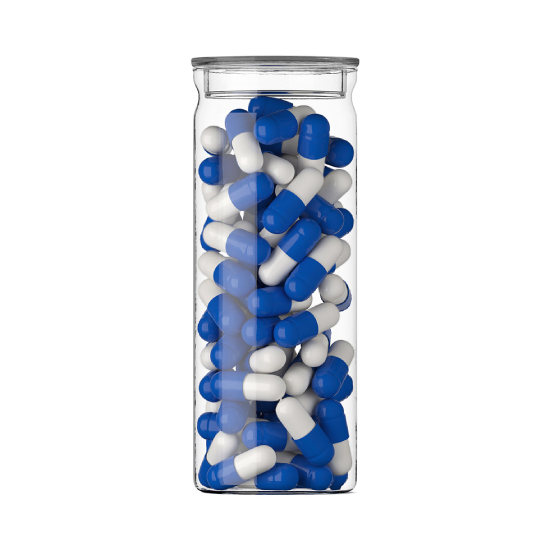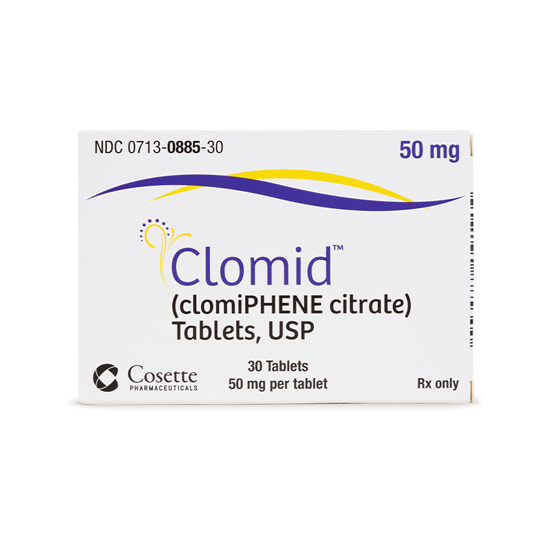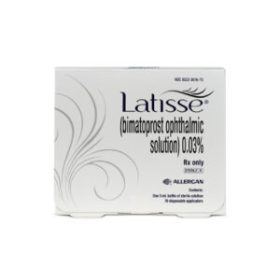This product is available solely through our 503A Compounding Pharmacy, ensuring personalized care and precision in every order. Please note that a valid prescription is required for purchase. If you do not have an account, please contact us.
Clomiphene Citrate Capsule (Each)
Clomiphene Citrate Tablet (Each) †
† commercial product
Including patients with polycystic ovarian syndrome (PCOS), clomiphene is a nonsteroidal fertility drug used to induce ovulation in infrequently ovulating or anovulatory women. Patients whose hypothalamic-pituitary-ovarian axis is intact and whose ovaries are capable of functioning normally are effectively ovulated by the medication. Because it is relatively simple to use and has little financial cost, clomiphene is usually the initial drug for these patients. In 80% of correctly selected patients, clomiphene will cause ovulation; about 40% will become pregnant within six treatment cycles. In women who naturally ovulate on a regular cycle, clomiphene is useless to raise pregnancy rates. Compared to the general population’s 1%, clomiphene treatment is linked with just somewhat higher rates of multiple births, ranging 3 to 5%. If it happens, multiple gestation is often twins. Donor insemination. Clomiphene has also been interestingly used to raise sperm counts in male patients with idiopathic oligospermia; the FDA first authorized it in 1967.
By blocking estrogen’s usual feedback on the hypothalamus, it encourages the release of hormones that trigger ovary stimulation. This leads to more follicle growth and can result in multiple mature eggs. Ovulation usually happens 5–10 days after the final dose, which is often given between cycle days 5 and 9. Clomiphene may also affect tissues like the cervix, possibly causing thick secretions that make conception harder in some women. It does not influence male hormones or thyroid function and usually stops affecting cycles after treatment ends. In some cases, ovulation continues on its own. Clomiphene is sometimes combined with other medications such as estradiol, HCG, or metformin to improve fertility or treat conditions like polycystic ovary syndrome. For men with low sperm counts, clomiphene may boost hormone production, leading to more sperm and testosterone, though it doesn’t always improve sperm movement or development. These treatments should always be supervised by specialists.
Before using clomiphene, it’s important to let your healthcare provider know if you have certain medical conditions such as adrenal, liver, or pituitary disorders, ovarian cysts, endometriosis, or unexplained vaginal bleeding. Clomiphene should not be used if you are pregnant, breast-feeding, or allergic to it or its ingredients. It only works if your hormonal system and ovaries are functioning properly. Certain conditions like diabetes, obesity, or low estrogen levels may reduce its effectiveness. Men with specific fertility issues might not benefit from clomiphene, except in rare cases like idiopathic low sperm count.
Clomiphene can increase the risk of ovarian enlargement, multiple pregnancies, and other side effects, so treatment should be closely monitored. Women should report symptoms like abdominal pain or sudden weight gain immediately. It should not be used by patients with liver problems, depression, or active blood clots due to potential risks. Clomiphene may cause dizziness or blurred vision, so avoid driving or operating heavy machinery until you understand how it affects you. Additionally, alcohol and tobacco may interfere with fertility, so reducing or avoiding them is recommended during treatment. Always follow your doctor’s instructions and attend all necessary check-ups.
Androgens in women may oppose the impacts of certain fertility procedures. By hydrosteroid dehydrogenases and aromatase, peripheral tissues transform prasterone, dehydroepiandrosterone, DHEA into androstenedione, testosterone, and estradiol. Hyperandrogenism and infertility have been linked to elevated endogenous levels of the hormone prasterone, dehydroepiandrosterone, DHEA; it is theorized that DHEA nutritional supplements might lower the reaction to clomiphene therapy.
Certain herbal or alternative treatments could alter hormone levels or hypothalamic-pituitary function and thereby impede fertility treatments. Chasteberry, chaste tree fruit, Vitex agnuscastus might interact with the therapeutic action of infertility medications. A case of ovarian hyperstimulation syndrome and multiple follicular development has been claimed in a woman who used chasteberry before to one of her IVF protocol cycles; serum gonadotropin and hormone levels were disturbed and pregnancy was not achieved. Because of insufficient evidence, herbal treatments promoted for women‘s health are not advised for use with prescribed fertility treatments.
One phytomedicinal with possible suppression of luteinizing hormone (LH) is Black cohosh, Cimicifuga racemosa. It might possibly irritate some fertility drugs that increase gonadotropin production. Because of a dearth of evidence, any herbal cures suggested for women‘s health are not advised for combination with planned fertility treatments.
Theoretically, the soy isoflavones may compete with drugs selectively modulating estrogen receptors. In patients using clomiphene, soy isoflavones should be taken sparingly.
While usually safe, clomiphene can have side effects in some individuals. Only a small proportion of women on clomiphene have twins or more; most have a single pregnancy. Headaches, hot flashes, modest pelvic pain, breast tenderness, dizziness, and frequent side effects. Thickened cervical mucus or vaginal dryness can affect fertility in some women. Ovarian enlargement happens in roughly 14% of users and has to be watched carefully; therapy should be stopped until symptoms go off if there is agony or distress.
Particularly at greater dosages, patients should report any changes right away as visual abnormalities including fuzzy or double vision could arise. Other possible side effects include skin reactions, hair loss, tension, sleeplessness, and unusual blood clots. Though more research is required, there is no apparent link between clomiphene and cancer.
Classified as FDA pregnancy risk category X, Clomiphene should not be used once conception has taken place. There are no proper human studies of clomiphene’s impacts on the developing infant. Early gestation animal reproduction studies have, however, revealed unfavorable fetal outcomes including the development of ocular anomalies and congenital structural bladder and intestinal abnormalities. With regular use, clomiphene seems not to raise the rate of spontaneous abortion or birth defects. Data indicate, nevertheless, that continuing clomiphene unintentionally early in pregnancy may cause teratogenesis. Before another course of clomiphene is started, thorough examination of the patient is required to make sure pregnancy has not happened following a course of clomiphene. Apart from possible impacts on the fetus, clomiphene usage raises the slight chance of multiple gestation and the hazards associated with such pregnancies.
Because many drugs are excreted in human milk, caution should be exercised if clomiphene is given to a nursing woman. Reductions in serum prolactin, particularly the poststimulation spike in serum prolactin, might be the underlying mechanism. Clomiphene would probably impede milk in a breastfeeding mother. If clomiphene treatment is required in the mother, alternative ways of feeding for the baby would be advised.
Store this medication at 68°F to 77°F (20°C to 25°C) and away from heat, moisture and light. Keep all medicine out of the reach of children. Throw away any unused medicine after the beyond use date. Do not flush unused medications or pour down a sink or drain
- Potashnik G, Lerner-Gava L, Genkin L, et al. Fertility drugs and the risk of breast and ovarian cancers: results of a long-term follow-up study. Fertil Steril 1999;71:853-859.
- Serophene (clomiphene citrate) package insert. Rockland, MA: EMD Serono; 2010 June.
- Zuckerman H, Carmel S. The inhibition of lactation by clomiphene. J Obstet Gynaecol Br Commonw 1973;80:822-3.
- Kroboth PD, Slalek FS, Pittenger AL et al. DHEA and DHEA-S: a review. J Clin Pharmacol 1999;39:327—48.
- Cahill DJ, Fox R, Wardle PG, et al. Multiple follicular development associated with herbal medicine. Hum Reprod 1994;9:1469—70.
- Duker EM, Kopanski L, Jarry H, et al. Effects of extracts from Cimicifuga racemosa on gonadotropin release in menopausal women and ovariectomized rats. Planta Med 1991;57:420—4.
- Eagon PK, Tress NB, Ayer HA, et al. Medicinal botanicals with hormonal activity (abstract 1073). Proc Amer Assoc Cancer Res 1999:40.
- Lieberman S. A review of Cimicifuga racemosa (black cohosh) for the symptoms of menopause. Journal of Women’s Health 1998;7:525—9.
- Duffy C, Cyr M. Phytoestrogens: potential benefits and implications for breast cancer survivors. J Womens Health (Larchmt). 2003 Sep;12(7):617—31.
- Clomid (clomiphene citrate) package insert. Bridgewater, NJ: Sanofi-Aventis US, LLC; 2012 Oct.






